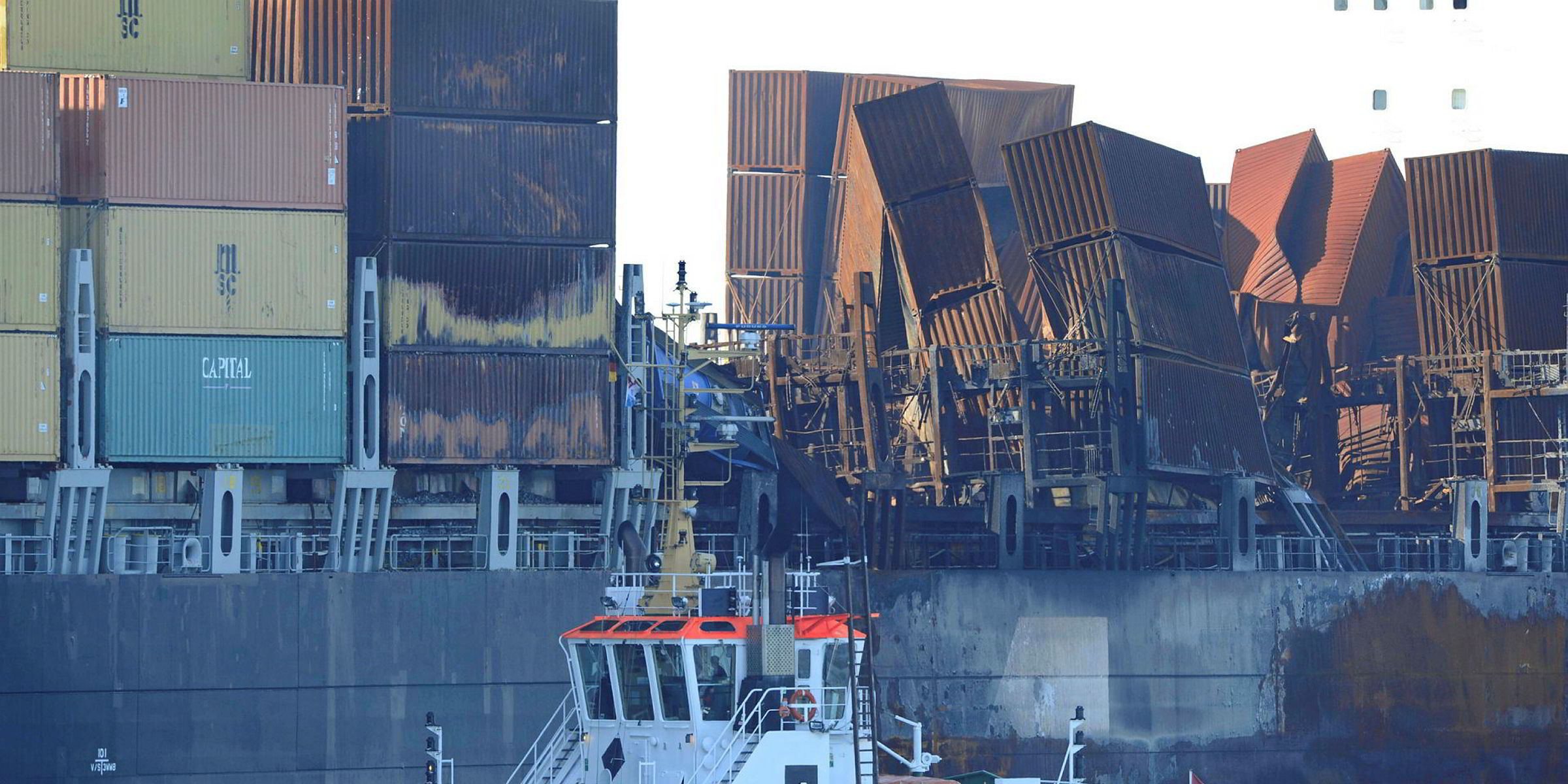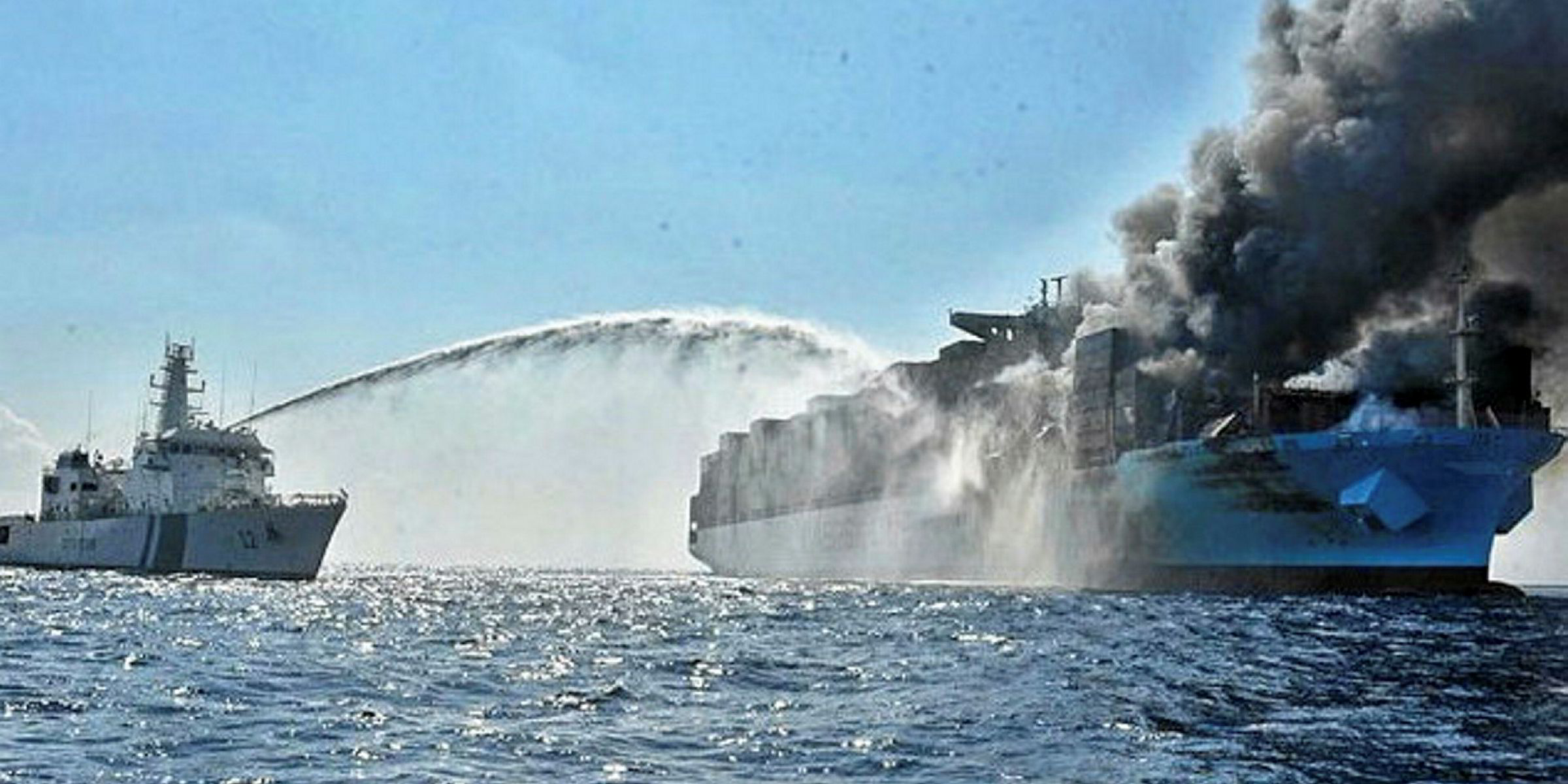The shipping industry is still struggling to contain a long-running problem with boxship fires despite more than a decade of effort aimed at combating the misdeclaration of dangerous cargoes.
In the months before the 15,262-teu Maersk Honam (built 2017) fire, the Standard P&I Club, UK P&I Club, the International Union of Marine Insurance, Allianz and others issued warnings over the threat posed to container shipping by dangerous goods, reflecting the current high level of concern.
IUMI produced figures suggesting that cargo-sourced containership fires are running at close to a rate of one per month.
The Standard Club estimates that about two million containers carrying dangerous goods are wrongly declared as non-dangerous, either in error or fraudulently, every year.
The result is that such cargoes are loaded onboard in areas that could result in explosion or leakage.
The most common cargo associated with containership fires is chemical disinfectant calcium hypochlorite, which is not regarded as a dangerous cargo if stowed correctly, but combusts at 30C and above.
The chemical is best known for its use in sanitising swimming pools.
Yet the premium charged by many freight forwarders for carriage is encouraging several shippers to misdeclare the cargo.
The first cases or fires linked to calcium hypochlorite emerged in 1991 and it was the suspected cause of a fire as recently as last year's blaze on the 6,350-teu APL Austria (built 2007).
The Standard Club said the Cargo Incident Notification System set up by the leading boxship operators in 2011 was starting to give an indication of the extent of the problem.
The club quotes figures from insurer XL Catlin, suggesting that an 18,000-teu containership could be carrying as many as 600 inaccurately declared dangerous cargoes at any time.
While diligence at the booking stage can be enough to uncover a mistaken declaration, the Standard Club said wilful misdeclaration can be harder to spot.
One reason is that a host of names under which calcium hypochlorite is often declared range from water treatment compound, whitening powder and bleaching agent.
In the case of the 2015 fire on the 9,578-teu Caroline Maersk (built 2015), a cargo of charcoal tablets, where the fire originated, was declared as “tablets for water pipes”.
In such fraud cases, the name of the manufacturer is often invented and a Certificate for Safe Transport of Chemical Goods produced based on tests conducted on safe chemicals. Bribery is used in the more extreme cases.
The Standard Club believes the booking process is a weak link in the shipping chain, where improvements can stop much of the misdeclaration.
“By ensuring all booking office staff and agents know about dangerous cargoes, know their customers and rigorously check all booking documentation, the chances of loading one of the two million misdeclared containers shipped every year will be significantly reduced,” the Standard Club said.
It has raised a series of “red flags” which it believes will help shippers spot misdeclaration. These included being aware of the alternative names used for chemicals, familiarisation with the shippers and how to spot discrepancies in the booking process.

Some operators have tracked this through campaigns, including Hapag-Lloyd with its in-house publication Cargo Patrol.
Experts believe that internal monitoring systems could be the best way to tackle the problem. They point out that individual container inspections are too time consuming and impractical to enforce in container shipping.
While the boxship business was able to incorporate container weighing to check box weight declarations without disturbing the loading process, that would not be possible with inspection for hazardous goods.
Maersk Line itself has attempted to tackle the problem by limiting the shipment of dangerous cargoes to shippers it is familiar with. It adopted the step after a 2012 fire on the 9,600-teu Charlotte Maersk (built 2002) that was linked to methyl ethyl ketone peroxide.
IUMI secretary general Lars Lange, speaking at last week's International Salvage Unions associate meeting, stressed the need to improve firefighting capability onboard containerships.
That might extend to providing specialist training in firefighting to containerships' crew. In many cases, fire detection and CO2 extinguishers have proved ineffective.



